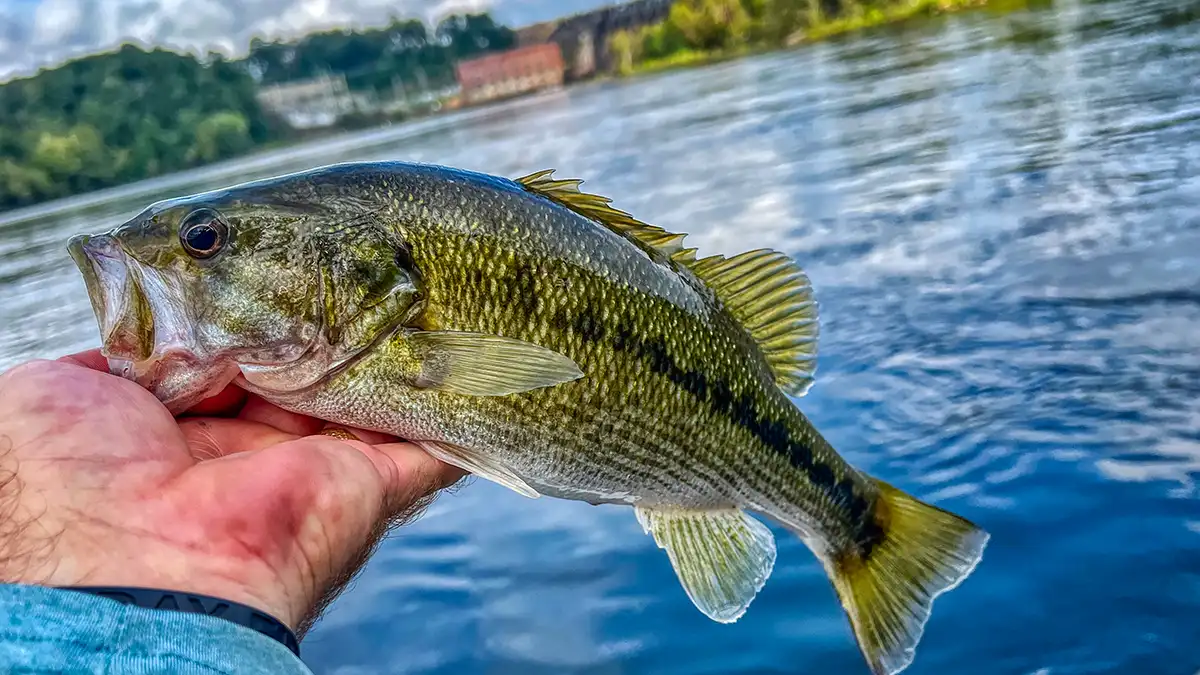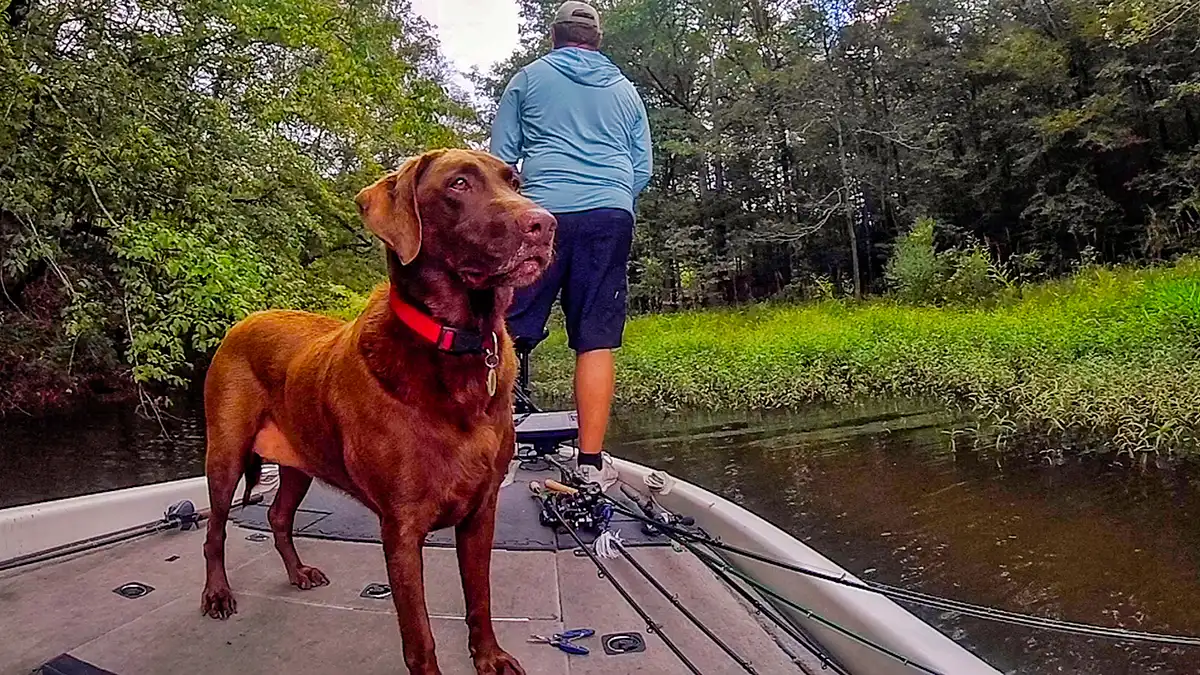I love to break down new water whenever I’m bass fishing. Many of you probably don’t know this, but I used to travel the Southeast fishing college and then semi-pro tournaments. The Bassmaster Opens and what was at the time the FLW Everstart Series, now MLF Toyota Series.
I bring this up only to illustrate my point further. I enjoyed the competition of it all, really enjoyed it when I occasionally did well in an event, but more than anything I really just loved going to a bunch of lakes that I had never seen before and getting to break down new water. That was my favorite part about that season of life.
Nowadays though, I can find myself in a bit of a rut from time to time, fishing the same two or three lakes around the house the same old ways. For something different, I decided to head over to a lake about 40 minutes from where I live that I’d always wanted to fish but never have. So I’d like to talk you through how I like to break down new water and what I did on this new lake.
SAMPLE AS MUCH AS YOU CAN
Goat Rock Lake is the name of the fishery I set sail for, a small reservoir sandwiched between Lake Harding and Lake Oliver. You’ve likely never heard of any of these three lakes that lie along the Alabama/Georgia border. But you probably have heard of the Chattahoochee River that runs through them, along with their neighbors to the north and south: Lakes Lanier, West Point, Eufaula and Seminole.
With the lake being only 940 acres, it set up well for an outing like this. I like to break a lake up into sections whenever I’m going to fish it for the first time. If the lake is large, say 10,000 acres or more, and I have multiple days to fish it, I’ll find a few ramps scattered around the lake and then trailer from ramp to ramp so I can focus my time on the water on fishing what’s near the ramp in that particular section.
But for a lake this size, there was no need to trailer. I launched upriver, near the dam and then inevitably ran the 3 or 4 miles all the way down to the lower dam before the day was done. Most any river run lake like this can be broken into three main sections: upriver, river run and lake.
The upriver part will typically start in the tailrace of a dam or at a rapid. The river run is usually narrow without a lot of pockets, creeks or backwaters. And then when you get down to the lake part, the water will widen and you’ll see more pockets and points. It’s important to fish a little in each section of a lake, since the different sections almost never fish the same way. And the bass may be active in one section, while they’re not in another. You’re typically much better off sampling the whole lake, or at least a large portion of it this way, than you are to just put the trolling motor down and go down the bank all day in one area.
LOOK FOR MOVING WATER
Running water is a key thing to look for anytime you’re fishing a fishery for the first time. From turbines generating water through dams, to rapids in the back of a creek, to a pipe spilling just a little bit of runoff into the water, this moving water is rich in oxygen and has the power to position both the bait and the bass.
Current is your friend when it comes to bass fishing. Small baitfish get swept along in the moving water. The bass either chase them around in the looser current, or they’ll setup behind a boulder, point, bridge piling or other current break and wait for the bait to wash to them. This is exactly what I found to be the case at Goat Rock.
I launched my boat within sight of the dam. There were dozens if not hundreds of bass schooling in a 10-acre area just down from the dam, where the current kind of spread out and softened. Most of the bass were little, 10- to 14- inch spots with the occasional largemouth mixed in. Surprisingly there were no stripe or hybrid in the massive school of busting bass. That’s a rarity. I fished for these little guys for about 3 hours, and probably caught 25 of them on various baits.
After a while, I knew the likelihood of me catching a bigger bass in this school was slim, so I moved up to the face of the actual dam and tried fishing some of the harder seams of the swifter current. I caught one spot that was a little over 2 pounds, and a couple stripe in the 10-pound range. Those bites and fights would have been exciting enough on their own, but with the current ripping they were a little extra exhilarating.
FISH WHAT LOOKS GOOD OR OBVIOUS
Around 10 o’clock, I decided it was time to stick to my plan and sample a little more of the lake. I ran down about a mile and the river started to open up a little bit and I found three deeper, rocky points all within sight of each other. With the water temps in the mid 80s and these being the first defined points in 15-plus feet of water, I thought they’d would be automatic. Especially considering there was still noticeable current when I stepped up onto the front deck to fish them.
Unfortunately though, I cranked all three points and even drug a jig around them without so much as a single bite. So I decided then to pick back up and run all the way to the dam, to get a look of the whole lake first and then fish my way back up through the sections. I noticed while running that there were a decent number of docks the further I went and made note of them to sample on the way back.
Once I started to near the lower dam, I tucked off into a narrow little creek. I had spent the day so far fishing along the river, and thought I might find a little running water in the back of this branch. Unfortunately it was a dead end in that regard, but I still fished my way in and back out. The creek looked really good, with shade covering both banks. I tossed a topwater around and had a couple small blowups, but nothing too promising.
Moving out of this branch, I made a couple more fruitless efforts at fishing main-lake points with a crankbait before deciding to commit some time to the shallow game. I found a pocket with a few docks and some shoreline grass, picked up a swim jig and a buzzbait and got after it. For the next two hours I bounced from pocket to pocket, fishing through prime largemouth territory with only a couple small swipes at my baits.
This was probably the most surprising and disappointing part of the day. The longer I went without a bite on the buzzbait, the more confident I became that I’d eventually catch a big one. That may seem a little counterintuitive at first, but that’s the way a lot or our lakes are here in the south. If there aren’t a lot of small ones biting, then that’s almost a good sign cause it makes room for one or two large ones to rule the roost. To no avail though.
CIRCLE BACK
By this time, I had fished my way about halfway back up the lake. I started back towards the ramp, sampling a couple more pockets and docks along the way, before finally returning all the way to the dam where the small schoolers were busting to start the day. I decided to see if I could still catch a few of them with it now late in the day. I caught a couple more small ones just casting around. The surface schooling action though was definitely done at that point.
Sometimes, I’ll start on the best bite I’ll find all day, but the thought of greener pastures will have me eager to move on. That’s kind of how this trip went. Granted, I had milked the schoolers for quite a while before I left. But I could have still hung in there and caught a few more no doubt. I just knew however, that I could catch some bigger ones somewhere else. Turns out I knew wrong.
Hopefully this example and these simple suggestions will help you the next time you need to break down new water. Whether the lake is big or small, there’s no need to let it intimidate you. You can take a 40,000-acre lake if you want to and break it down into what amounts to 10 different little 4,000-acre “lakes”. These smaller sections are more digestible and will often fish in a unique way as compared to the other parts of a lake that size.
It’s always a good idea to look for running water anytime of the year. Current is a bass angler’s best friend. Just be careful if you fish near a dam, always follow whatever laws apply to the area. If the signage says “No Boats,” don’t go in there. It’s not worth it. If it says “Wear a lifejacket beyond this point,” wear the dang life jacket! Looking cool while trying to catch a bass isn’t worth risking some odd mishap and dying over it. Be especially careful in these settings when the weather and water temperatures are cold.
Then just try to move around and hone your instincts. Fish what looks good, and those instincts will get better and better with time. Fish the obvious stuff like rocky points, docks, tree tops and grass. This plan didn’t pan out for me all that well on this particular day, but more times than not a pattern will form from just fishing the more obvious things to start with. This is the way I break down new water, and it’s quite satisfying and a whole lot of fun when the puzzle pieces start coming together.

















